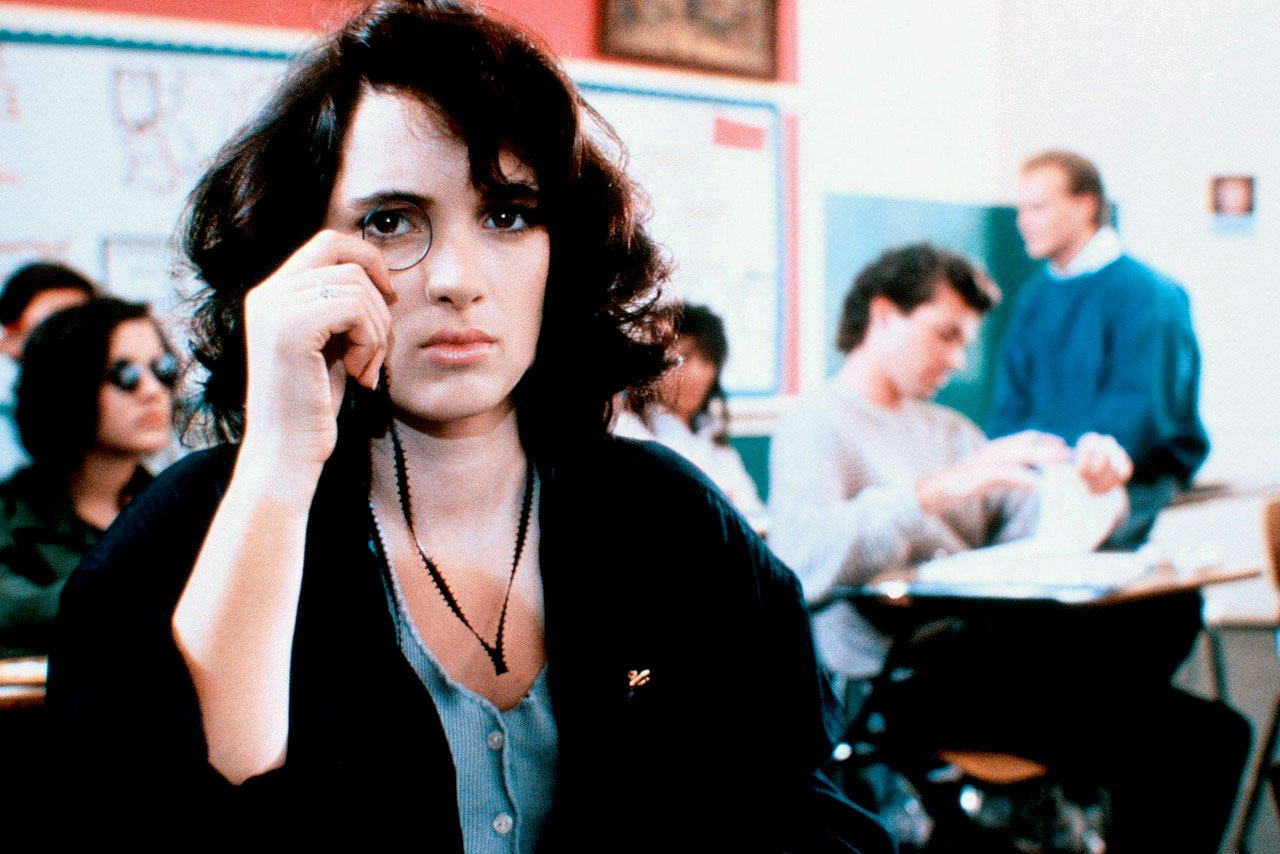
No one would be surprised by the notion that youth culture is a driving force in American popular entertainment. It’s an accepted truth, but this idea sits in an interesting place, culture is now shaped by mass media at least as much as it drives any of its trends. This is certainly true for American youth culture and the films made about it. The idea of a distinct culture for young people is relatively new one. Taking shape and gaining recognition along with other large shifts in American consciousness in the middle of the 1950s. When we talk about teenagers in America, for decades we have been talking about a demographic heavily influenced through music, television, comic books, and of course, movies. Watching movies can tell us interesting things, intentionally or not, about when they were made, and other movies can sometimes recreate an era that we otherwise could not see.
Today many leading social scientists and cultural commentators will discuss how younger Americans essentially live through a kind of extended adolescence, sometimes ending only in an individual’s late 30s. One consequence of this is how the relevance of youth-oriented mass media has only grown since it took hold after WWII. The economy and the opportunities for younger Americans have shifted dramatically from earlier generations in ways that are both good and bad. Various categories of people under age 55, each with their own flavor blends of nostalgia, take up space all over the internet. Each set has its own certain little bits of pop culture and art that people think of as belonging to their time.
Life as a teen, college student, or young person out in the world can be recalled through these cultural touchstones. It’s not up for discussion that American youth media is a powerful social force. The how and why, and the differences within each era are a more uncertain topic. One way to least catch glimpses of its evolution and influence is through cinema. A whole category of film is filled with entries about this topic which is itself an insight into the importance of the youth culture idea in the United States.
The films here are listed by the era when they are set, which is usually, but not always, when they were actually made. Each can provide a window or a mirror into 20th and 21st century American youth culture. To be sure a lot of this is in the “white middle class teenager” orbit, not all of it, but a lot. This is primarily due to how much space was taken up by that demographic in this particular area of film. That is starting to shift and new films switching and adding different perspectives from a broader set of young people are being made, that’s good. In recognition of that, this list is not even pretending to be comprehensive, but it gives an introductory take on how this subject can be examined through film. If exploring social topics or history through film isn’t necessarily your jam, no worries, none of these need to be viewed that way. They are all pretty good movies on their own.
1. Rebel Without a Cause (1955)
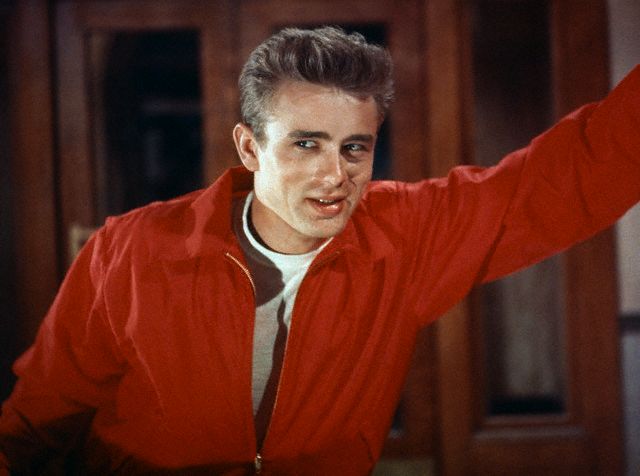
The idea of a youth culture, as a subset of American society began to take hold in the 1940s and came into its own in the America of the 1950s. As post war generations became a greater economic force, they became a more influential force. Parents who had lived through the Great depression were determined to invest money and time into their kids in a way that America hadn’t been accustomed to before, at least not at the scale it happened in the middle of twentieth century.
Another feature of that era that is maybe less appreciated now, is that post war disillusionment was a real thing. As a rigid set of social norms and expectations bore down on younger generations, a sense of resentment and existential dissatisfaction began to set in. This manifested in the Beat Movement and other emerging social trends. Juvenile delinquency became a cause for concern readily exploited by pop psychologists and politicians for various ends. Rock music, comic books, and many other contemporary forms of media were blamed for everything from rising levels of juvenile crime to communist infiltration. Yep, that was good ol’ 1950s America. If you had to pick a singular expression of the moral panic of the time committed to film, there aren’t many that do the job better than 1955s “Rebel Without a Cause”.
There hadn’t yet been a solid example for white middle class teenagers in Eisenhower’s America to use when giving the middle finger to societies expectations. After this movie that changed. A few films are close, “The Wild One” starring Marlon Brando a few years earlier had some inklings, but it focused specifically on a biker gang, not a group of kids that seem like they should be in high school. Another film “Blackboard Jungle” came out the same year and should be seen, but its narrative is driven by the focus on its adult characters. Rebel looks at a group of what should be “all American kids” suburban, white, etc.. and finds them full of angst and rejecting the world around them.
This film is important for several reasons, not the least of which the way it carved James Dean into the collective cultural memory as the archetype for distressed suburban youth. At a time noted for its emphasis on conformity, the characters in this film are all pushing well past the envelope of acceptable behavior. Theses 1950’s youths are very much not Wally and the Beaver. Underage drinking, knife fights, and literal drag racing to the death are all elements explored in the film. No less important are its explorations of the creeping sense of dissatisfaction and isolation its main characters all share. One that would have a growing voice.
This template was tapped into for subsequent books and movies of the era and that revisited it for future material. Examples can be found across media in literature, television, and film. Just a few film examples include serious takes like the dramas “The Outsiders” and “Falltime”.
Another reason this film endures as a touchstone of teenage rebellion is infamous. It featured the last role James Dean ever played before dying in car crash. Before the release of the film Dean fatally wrecked his brand-new Porsche 550 Spyder. The car itself is a notorious death trap but excessive speed was cited as prominent factor in the accident. Dean, like many young artists who die an early death seems forever imprinted on American culture. His character in “Rebel Without a Cause” is an important reason the actor is still known and widely influential 66 years later.
2. American Graffiti (1973)
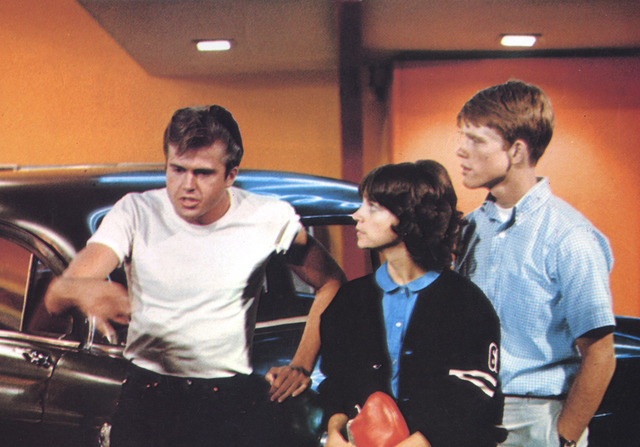
Although made in 1973 this film is set in a very authentic feeling 1962. It was a new decade but the 50s influences were still going strong. James Dean isn’t brooding and being cool anywhere, but “American Graffiti” goes a long way in painting a different and much brighter picture of young America without ignoring sex, drinking, and rock and roll. Some people even think it’s the best film ever directed by George Lucas, yup, that George Lucas, with some help from Francis Ford Coppola as producer. The film came early in the careers of two highly influential American movie makers but is often ignored as a significant contribution. This is an oversight “American Graffiti” takes big steps in rounding out how young Americans could be depicted in film.
Although free from the interstellar fantasy or dark ruminations on American society associated with Lucas and Coppola, it shows how they could put a story together. This picture explores some highly accessible themes in an entertaining way. The film centers around a last night of cruising on the late summer streets of Modesto, California. The characters are realistic and recognizable with each one having a series of misadventures and profound moments. Although lacking some of the grim reality explored in “Rebel Without a Cause”, “American Graffiti” does its part in positioning a few things that will take up permanent space as aspects of the American youth experience.
Uncertainty at the end of high school and the imminent decisions about what comes next provide the films central underpinning. A group of friends get together for a last night out and end up with a lot more than that. The youth culture at this time in the early 1960s had still not transitioned into one that would define the rest of the decade and the one after. Optimism and a sense that whatever lay ahead on the horizon was probably good was still alive and well in this slice of Americana. President Kennedy was still in office and Vietnam was not a country most young Americans knew anything about.
This film perfectly encapsulates an era in the country almost lost as a result of the trauma to come in just a few short years. This film is about the side of teen life where burgers, sodas, nice cars, and sock hops take a front seat, and none of it seems artificial. The dramatic elements are provided by the characters questioning their choices about college, girlfriends, and what the hell they are going to do with their lives. Cruising, parking lots, classic rides and hot rods feature prominently in the film as does a soundtrack of that eras specific rock and roll.
In addition to featuring good performances from a young Richard Dreyfuss, Ron Howard, and briefly Harrison Ford it can be credited with helping to spur a resurgence of interest and nostalgia for the 1950s. Howard would go on to feature in the TV megahit “Happy Days” and everything that came along with it including the “Fonz” and several spin offs. Something about this era must have appealed to 1970s Americans, there is a reason the movie version of the nostalgia fueled musical “Grease” hit the screens in 1978. “Happy Days” ran from 1975 until 1984 and shaped not just popular ideas about the 1950s and teenagers, but nearly every depiction of families on tv ever since. It seems like 50s style and nostalgia will probably never really disappear. Somewhere heavy in that mix is “American Graffiti”, although in truth an early 60s period pic, it is arguably the best of the bunch.
3. The Graduate (1967)
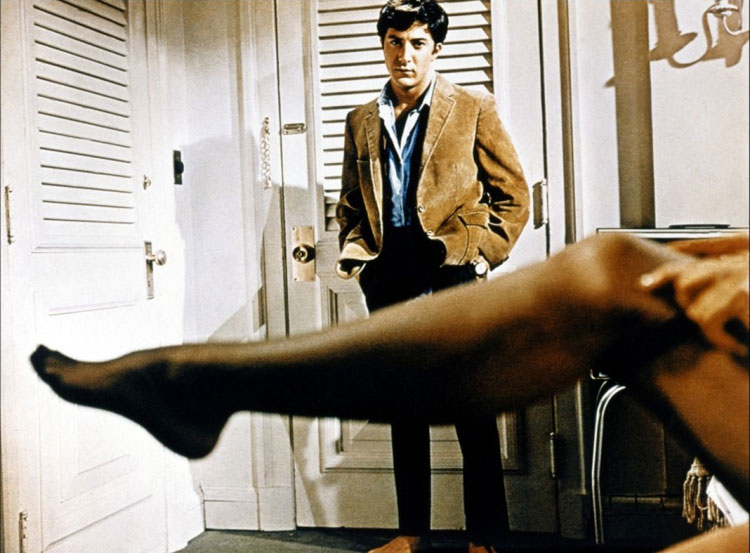
Returning to more serious fare “The Graduate” is a film about which much has been said and of course it has a place in this discussion. Taking the existential themes about what to do after school is over to another level, this 1967 classic makes its mark. This film finds Dustin Hoffman’s character Benjamin asking those same questions after college. Exploring elements and asking questions that many individuals in American society were also debating like norms around gender roles, career expectations and class, “The Graduate” is one among many films of the 60s that wrestle with serious topics while they entertain.
This film is a standalone great, boasting well known quotes, an outstanding cast, and an all-time great soundtrack. Where it stands out in its contribution to American youth culture cinema is in its broadening it out from teens. Mining the after-college experience for young people has been fertile territory for film making and this is another example of a blueprint being set for genre. The protagonist is a recent college graduate who should have lot going for himself, or at least everyone around him seems to think so. He himself is far less certain about anything and seems to bump along until deciding to engage in some decidedly unconventional behavior.
The films on this list so far have examined a lot of territory that is by now familiar to movie goers. As youth culture films have become more established as a genre, many of the thematic elements have become more common place and these films become more of an exploration of a certain kind of film. The Graduate is not that, this is a film that if it came out next year, might still raise some eyebrows. This is a film that has been used for reference in films from almost every genre. It establishes much in laying some important groundwork for future films about young adults, but like the book it was adapted from, it explores some complicated territory in sexual relationships. If this is a movie you haven’t seen yet, put in on your list.
4. Dazed and Confused (1993)
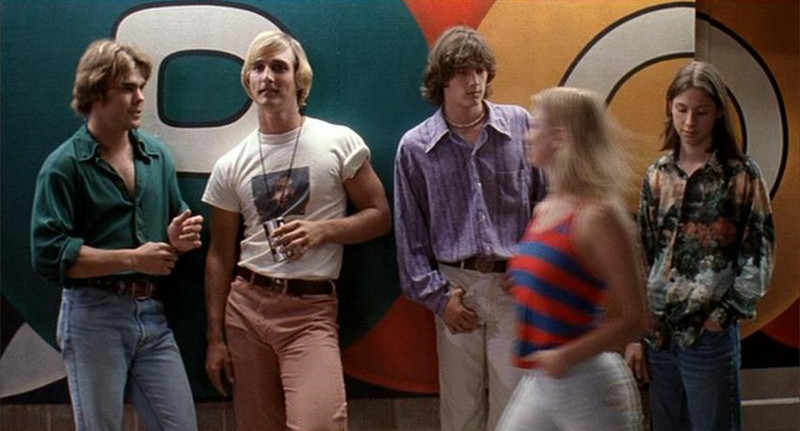
This cult classic is the second film ever from director Richard Linklater, and although made in 1993 its often considered a film that gives a realistic take on late nineteen seventies high school shenanigans. The film is noted for having a very authentic feel, possibly due to its director’s alleged penchant for mixing in a little autobiography. Very much made in the same “slice of life” mode as “American Graffiti” but even less concerned with asking big questions. This film is centered around the end of the school year, a good amount of cruising in era appropriate muscle cars, guys chasing girls around, and a big keg party in the woods. Adding to the successful ingredients is another well curated soundtrack of music from the time. This movie is a good-natured comedy that is just retro enough to be charming and was relatable enough to have “baked” itself into a status as one of the better movies from the early 90’s. It’s as associated with that decade as it is with its own source material and the net effect is positive for the audience.
In addition to Linklater successfully recreating aspects of his own 1970s adolescence, this film features some early breakout roles from a slew of actors that would come to dominate movies for the rest of 1990s and further. Maybe the best part of that is that these familiar faces don’t have a ton of screen time in an ensemble cast. In addition to sending out the ample 70s vibes the film has three outstanding bit performances from indie queen Parker Posey crushing it with her take on the mean girl archetype, Ben Affleck as a convincing meat head, and crowd favorite Matthew McConaughey going for laughs in one of his earliest roles. Other future headliners include Milla Jovovich, Renee Zellweger, and Adam Goldberg.
Dazed makes no attempt to be more than it is, which is a down to earth movie about one day in a particular time and environment. Sticking to that allows it to be a little bit of a time machine and a lot of a window into the hanging out and looking for a good time part of late 20th century adolescents. The influence of this movie might be easy to dismiss but that would be a mistake. Its fingerprints are all over the success of televisions “That 70s Show” and later films like “Superbad” giving their own take on hanging out and looking for a good time when everyone is supposed to be somewhere around 17.
5. Fast times at Ridgemont High (1982)
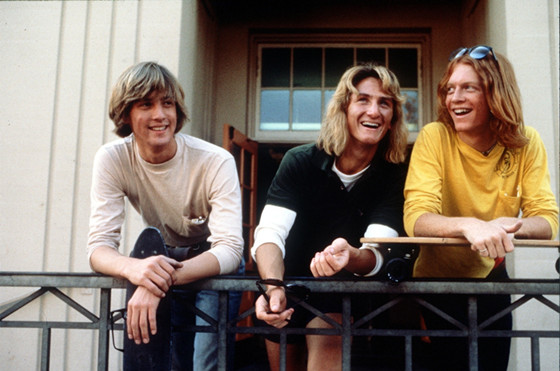
This entry is great example of a time capsule, a film made in the era it represents and touching on exactly the right things in exactly the right balance. First hitting the screens in 1982 it is an altogether entertaining look at teens once again set in California. Supposedly based on a kind of undercover experiment by “Rolling Stones” reporter, and future director Cameron Crowe. After spending time posing as a high school student Crowe wrote a book about his observations with the same title. Like a few other entries in this list, it lights up with performances from unknowns who would soon be major on screen attractions. Sean Penn delivers in his take on the surfer dude trope with the character Jeff Spicoli. Laughs and groans abound with this character, but more than that, the idea of a lovable burnout guy placed an imprint on American youth culture films. The Spicoli influence is heavily felt in characters from movies like the Bill and Ted series, “Dude Where’s My Car”, and several more.
This is another template setting movie and its influence on future teen film is hard to miss. Embarrassing situation gags play a part in this picture setting the stage for movies almost entirely devoted to them like “American Pie”. In addition to Penn, Phoebe Cates, Jennifer Jason Leigh, and Judge Reinhold help the movie explore a series of sub plots. Sex, drug use, school, and heavier topics like abortion are all themes here, and the movie darts in and out of serious issues and stupid humor. In another film this would feel uneven and weird but in Fast Times it works, this formula would go on and be felt in other movies with 2007’s “Juno” a notable example. Production quality is not high reflecting the low budget, but that doesn’t really detract from the overall effect. Some scenes seem to share a connection with the seminal “American Graffiti”, maybe not a surprise since the source material is the same CA teens, albeit separated by twenty years. Hanging out in or working crappy jobs at the mall has more of part in this film than the sock-hop. Trying to figure things out is still a tough thing to do.
This movie will be amusing to anyone watching today and the performances and straightforward writing hold up pretty well given that its pushing forty. If you haven’t seen it watch it, if for nothing else than Sean Penn in complete dumbass mode, which is golden. If you have seen it, the next time you watch it again, which you will, think about how it has rippled out to share common DNA with a lot of pictures focused on American teens.